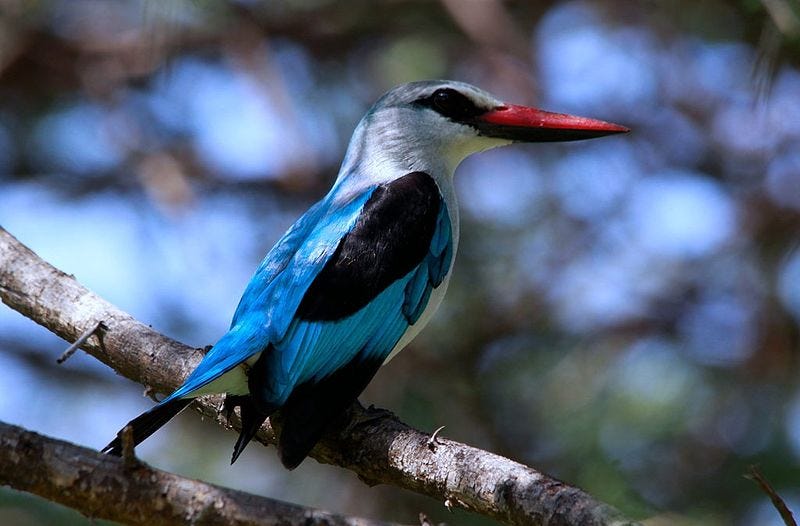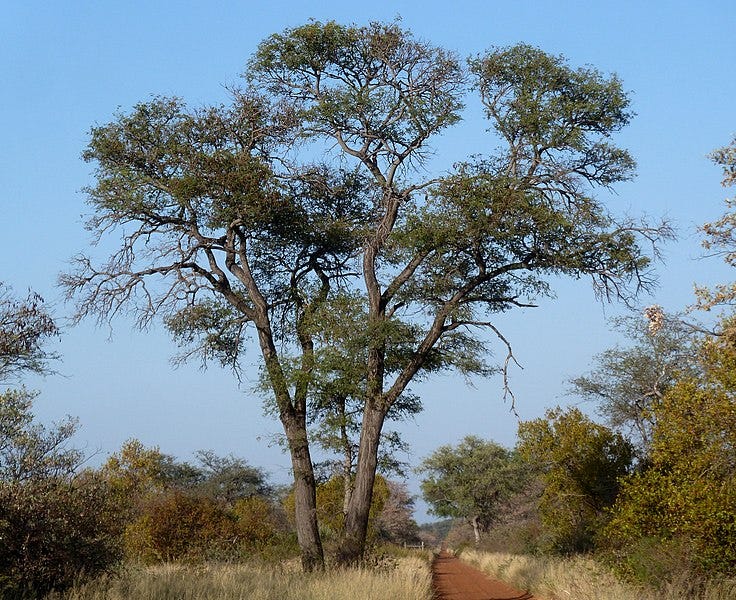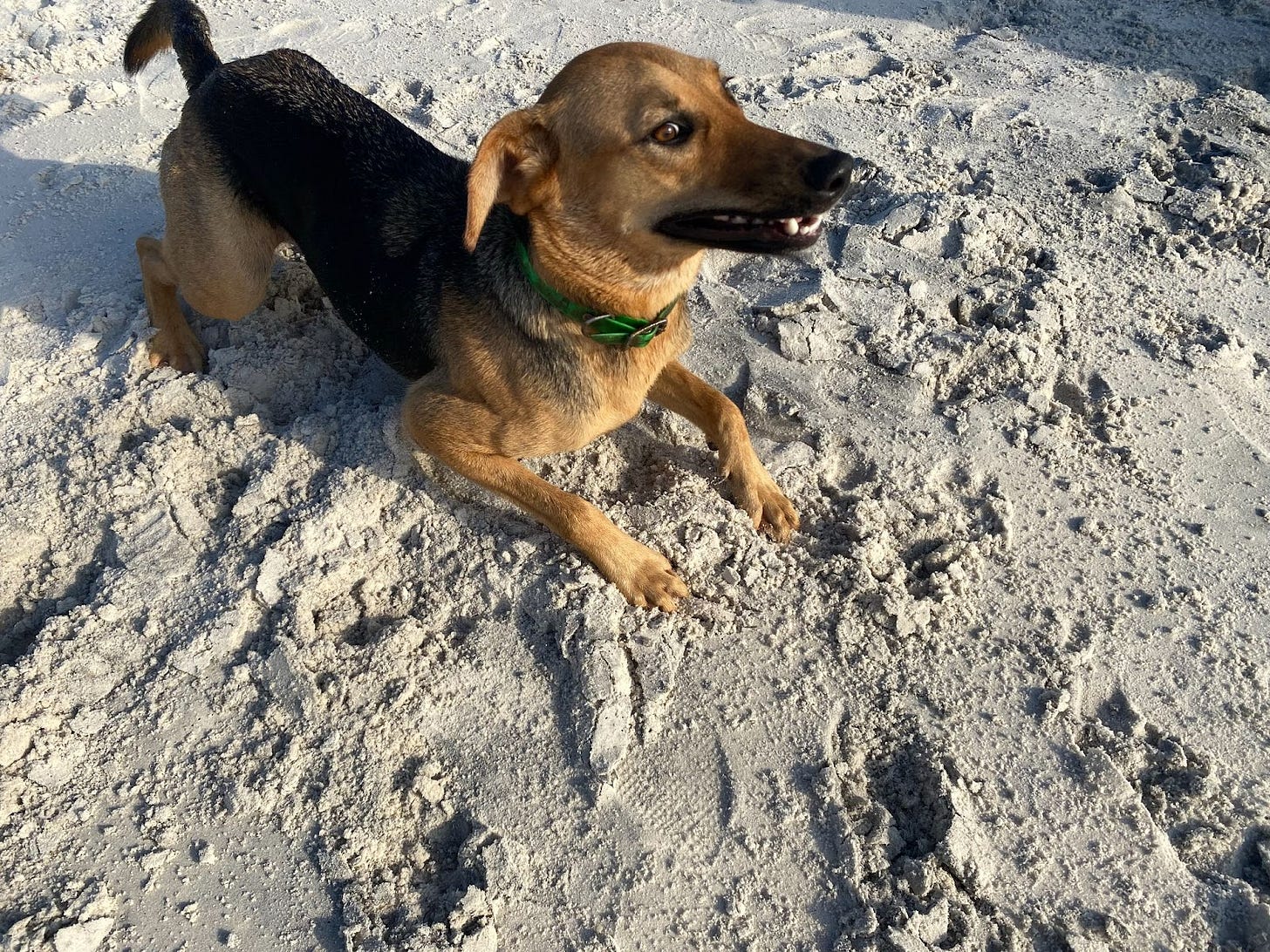Kingfishers Track Rains Across Africa
Brightly coloured African kingfishers fly for over 4,000 kilometres (2,400 miles) from their breeding grounds in South Africa to feeding grounds in South Sudan and then back again, a new study finds.
Over a three-year period, scientists based at the Mogalakwena River Reserve Research Centre, in South Africa's northern Limpopo province, fitted tiny multi-sensor geolocators – each weighing less than two grammes (0.07 ounces) – onto the backs of 20 woodland kingfishers.
They later recovered five of the devices from the returning birds and uncovered key details about their journeys.
The kingfishers, known for their shrill calls that echo through their woodland homes, left South Africa in March or April. They spent the non-breeding season in South Sudan within 100 kilometres (62 miles) of each other, before returning to their South African breeding site around November or December.
During their northbound journeys the kingfishers flew at altitudes of up to two kilometres (1.2 miles), typically making short nightly flights, though they extended these flights when they crossed the Congo Basin.
The birds followed the movements of the Intertropical Convergence Zone (ITCZ) – a weather phenomenon that shifts north and south of the equator at different times of the year bringing seasonal rains and abundant food, like insects, small snakes and frogs, that are sought out by these non-fishing kingfishers.
In South Sudan the ITCZ’s rains provide a similar ecological niche to the one the kingfishers occupy in South Africa.
The study’s findings highlight the critical role that global weather patterns play in supporting migratory species, even the small ones.

How Vultures Keep Their Nests Safe From Elephants
In parts of southern Africa concern has been raised about the impact that elephants have on knob thorn trees – a species of Acacia in whose crowns critically-endangered white-backed vultures build their large stick nests.
Elephants occasionally uproot the trees because they’re not as difficult to topple as hardwood trees or kill them by stripping off their bark.
But a 12 year-long study in a number of nature reserves in the north-east of South Africa appears to show that the white-backed vultures that nested there chose sturdier trees of different species growing along river courses that were less likely to be targeted by elephants.
“Elephant impact is not yet directly affecting the breeding potential of vultures [in the study site] but could be having an indirect influence on vulture nesting behaviour,” the authors note.
Human-induced impacts still appear to pose a greater threat to the large scavenging birds, who perform the vital task of ridding the savannah of disease-ridden carcasses.
Over the course of the 2008-2020 survey, at least 803 vultures were killed in the region surrounding the study site through poisoning or electrocution from collisions with electricity transmission lines.
But knob thorn trees still remain the most popular nesting sites for white-backed vultures and every effort should be made to protect mature trees and ensure the growth of younger ones to usable sizes, the authors state.
Wrapping wire netting around the base of knob thorn trees may be an effective elephant deterrent, the researchers say.

Hornbill Nests are Rich in Chemicals That Protect Chicks
Nesting materials used by hornbills in southern Africa are rich in antibiotic-producing bacteria, and even cyanide, that protect chicks from harmful microbes, according to a new study.
Hornbills nest in tree cavities and the females plug the entrance holes with mud, faeces and dead millipedes and confine themselves inside for up to two months each breeding season while being fed by the males.
Although the female defecates through an opening in the mud wall, dead chicks, old food and feathers accumulate inside along with potentially harmful germs.
It's likely the birds protect themselves against infection by incorporating rootlets from antibacterial plants as well as crushed millipedes in the nest plug. The crushed millipedes contain cyanide that doesn’t harm the birds but is useful in killing off bugs.
The study, conducted over three years, monitored three different species of hornbills – yellow-billed, Damara and Monteiro’s hornbills – nesting in nest boxes placed in trees at a study site in central Namibia.
Using doors at the back of the nest boxes, the scientists took swabs from the feathers and beaks of brooding females and some of their nestlings without disturbing the nest plugs at the front.
Analyses of the swabs showed that the birds’ choice of nesting materials likely influences what ends up on their skin and feathers as a defensive shield.
“The hornbill nest stands out as a special environment worthy of study because of its microbiota,” say the authors.
Nature Notes: Meeting Dogs in Wild Places
Whenever I head off on a reporting assignment in southern Africa, I always hope to meet a dog.
That's because leaving home means leaving behind our own beloved dog, who came into our family five years ago when our son rescued her off the streets of Harare.
Last year I met Naji, whose owner was managing a project to restore pockets of evergreen forest on Angola's highest mountain where unique birds live. Later in the year, I got to meet Sparrow. She lay in the sun on the verandah of an office used by the conservation group that was protecting Zambia's threatened swamp forests.
Sparrow was evidently feeding pups and was grateful for a tummy rub and some time off.
Then in December, on the white sands of Pemba Island in the Zanzibar archipelago, I got to meet the dog pictured below.
I never got to learn her name, or to meet her owner, who I presume was a fisherman or a seaweed farmer. But like all dogs that are unique to this part of Africa, she was extremely playful and mischievous.
She streaked across the beach between me and one of the botanists I was with in a game of tag, before joining us for a dip in the aquamarine sea.
Unlike our own dog though, who swims after me because she thinks I need protecting from imagined predators like crocodiles, this dog wouldn't venture further from where she could still feel the ancient coral bed beneath her feet.





